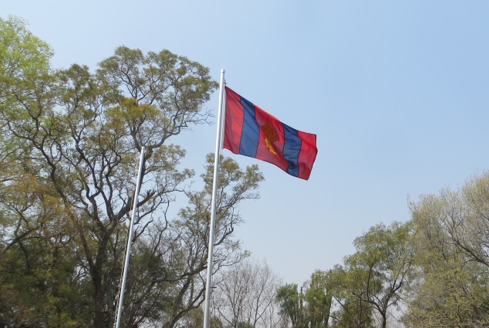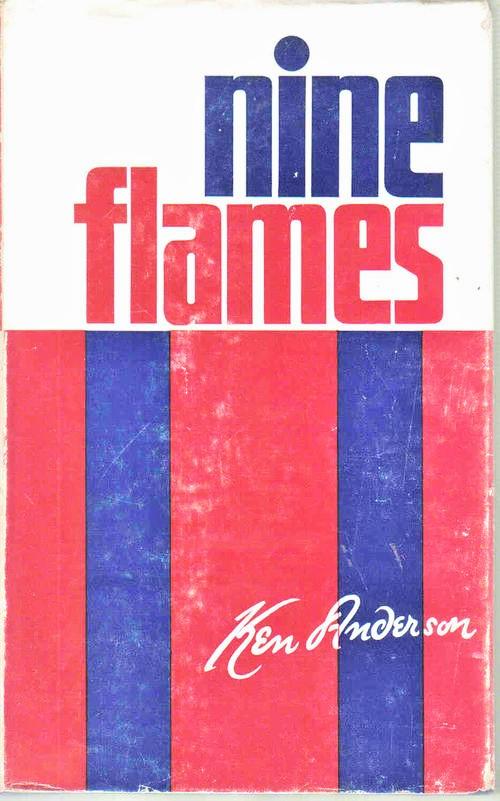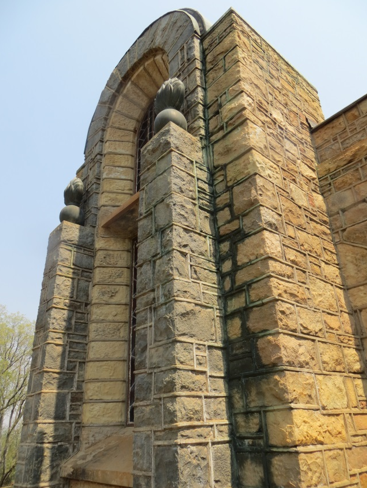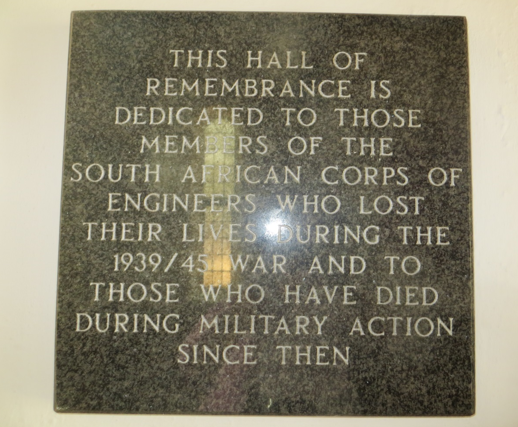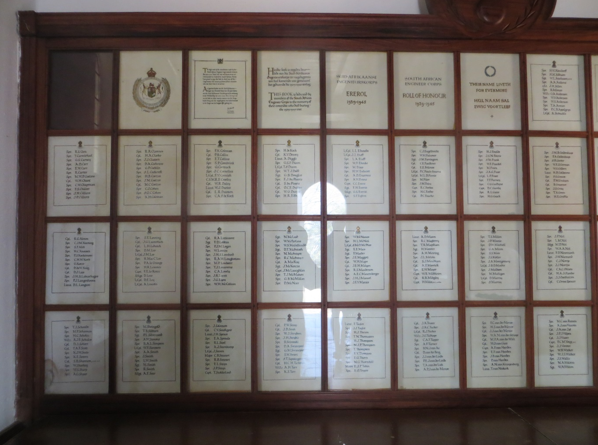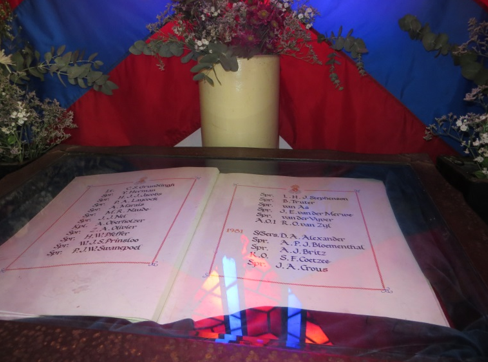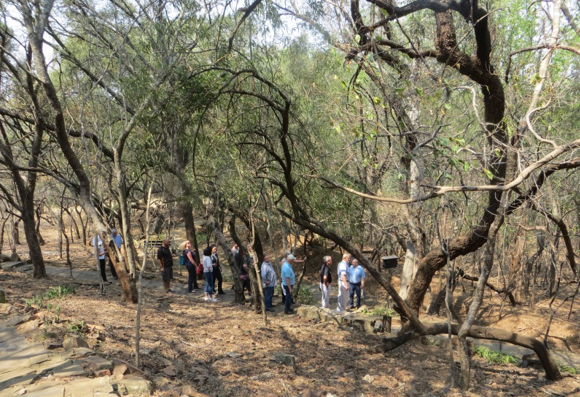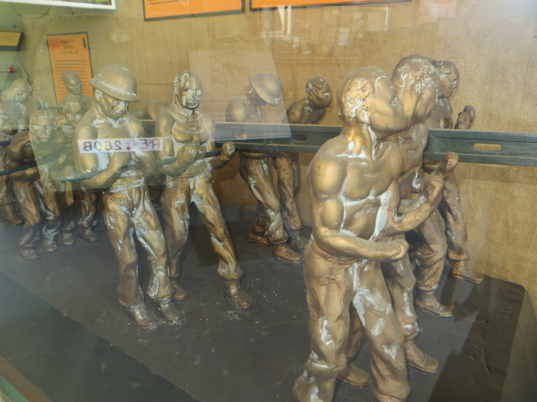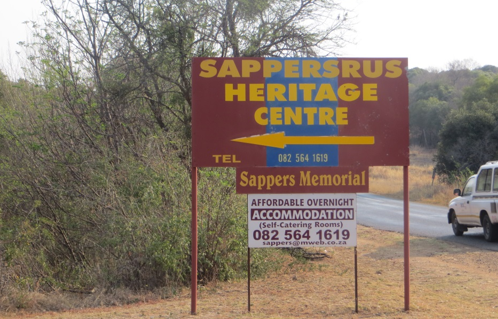
Disclaimer: Any views expressed by individuals and organisations are their own and do not in any way represent the views of The Heritage Portal. If you find any mistakes or historical inaccuracies, please contact the editor.
This month it was my pleasure to visit Sappersrus. The occasion was a gathering of the tourism association of the Hartbeestpoort Dam/Magaliesberg area to meet and learn about Sappersrus and its history and attend a small memorial ceremony. We enjoyed excellent hospitality and a lunch in the well-designed lapa close to the water. I was asked to deliver a short talk on the Battle of the Somme, Delville Wood and memorialization. Our hosts were Irene Small and Ashley Williams, who run the Sappers facility and Foundation. They keep the faith of past traditions, recruit new members and educate people about the Sappers and their role in World War II and other South African military engagements. Their task is to continue the charitable work of the Sappers Foundation (as the older Sappers Association is now known) and promote the Heritage Centre. Sappersrus also offers weekend accommodation to anyone wanting a break in pleasant country surroundings.
Sappersrus is located on the road from Hartbeestpoort Dam to Magaliesberg on the north bank of the Magalies River. It is at this point that the river flows into Hartebeespoort Dam. It is about 42 kms from Pretoria and about 1 hour 15 minutes drive from Randburg. It is very accessible and the roads from all directions are excellent.
The history of Sappersrus dates back to the Second World War and the comradeship among the South African Engineers Corp. The Sappers were the engineers of the army and South African Sappers saw service in East Africa, North Africa and in Italy. They distinguished themselves building make shift bridges, repairing roads, and undertaking construction projects. Their task was to make it possible for the army to get to the front lines and engage the enemy.
Towards the end of the war a Sappers Association was established growing out of the S A E C Old Comrades Association. It quickly established itself as a recognized welfare organization and charity to promote and protect the interests of those who had served in the Engineers Corp and to contribute to their successful transition to civilian life following their return to South Africa and demobilisation. There was also a social network and comradely support objective.
The initial idea behind Sappersrus was to provide a home for men awaiting demobilization and support them in practical ways in the search for employment. It was to become a home for those who found adaptation to civilian life difficult after four to six years in the army. The plan was to acquire a farm where crops could be grown, livestock kept and useful new skills learnt. Sappersrus became the reality.
The Sappers Association purchased part of the scenic old Grootplaats farm. It comprised undeveloped wooded land, with indigenous flora, trees and bush on a site that fell away towards the dam. Terraces and roads were built as men were taught the skills of road making and construction. Sappersrus was a training centre in agricultural engineering for men who had only known army life during war time service. The Sappers Association gathered funds and operated as a welfare organization. It was particularly supportive of men (and their families) who found reintegration into civilian life difficult. But was it to be a temporary or a permanent centre? Could this rural retreat not also be a focal point for the social life of former service men? What about a living memorial to those army engineers who lost their lives? The creation of a war memorial became a core objective immediately after the war to honour the men who did not return.
The Sappers Flag with the insignia of the nine flames. Here is a story and symbolism behind the nine flames. In 1944 King George VI granted the South African Engineers Corps the privilege of wearing the badge of the Corps of Royal Engineers, a “grenade fired”, with seven flames but the South African insignia has two extra flames. Below there is the motto “ubique” (meaning everywhere). (Information from Ken Anderson)
The man who was the driving force in the creation of Sappersrus was Jim McIntyre. The history is covered in a series of World War II histories: South African Forces: World War II, volume 8, and the 2 volumes of the Sappers called “Salute the Sappers” volume 8, parts 1 and 2 by Neil Orpen with H J Martin (Sappers Association, 1982). Another excellent source of information is Ken Anderson: Nine Flames (1964, Purnell). All three of these volumes are now highly collectable as items of both military history and Africana.
Nine Flames Book Cover
Very speedily permanent buildings were put up comprising thatched rondavel bungalows, a club house, a shop and store. The training centre functioned successfully for many years. The hilly riverside site was landscaped. Sappers rust also became a country club for old Sappers. Later facilities such as a swimming pool, a bowling green, tennis courts, and a rose garden were drawcards for people driving out from Johannesburg. As a child, as my father being an ex-serviceman (he had served in the Royal Air Force and his social circle were ex-servicemen friends), we enjoyed family picnics at Sappersrus. In the fifties it was quite an adventurous journey to travel from Johannesburg to the Dam and beyond.
Smuts laid the foundation stone of the clubhouse in 1948. Sappersrus was a haven and a productive farm for people who lived there but it was also a country recreational facility. Most important too for its financial stability was the Club’s acquisition of a liquor license which made for some lively parties.
17 hectares on a high lying koppie were set aside for a Memorial area and the construction of a war memorial which takes the form of a small Hall of Remembrance. The design was conceived by the Sapper artist, Ben Burrage, and his ideas were passed to an architect (I have not as yet established who the architect was). There is an interesting article about Burrage (Military History Journal, vol 12, no 1, June 2001). Burrage was one of seven officially appointed South African Artists of the Second World War, whose main contribution was his art work and drawings of the work of the South African Engineers Corps in Italy.
War Memorial Sappersrus (Kathy Munro)
Two copies of the Roll of Honour were created in italic script, the calligraphic efforts then placed within bound vellum volumes. One copy of the Roll of Honour was sent to St Paul’s Cathedral London to be placed in a Chapel holding the Rolls of Honour of all other Dominion engineers. The second copy is still held at Sappersrus. The memorial hall still stands. It houses the revered Roll of Honour. The foundation stone of polished black marble was laid in 1951. Orpen records that beneath the foundation stone is a sealed copper casket containing a microfilm of contemporary records, photographs and drawings and plans for the memorial, extracts from “S A Sapper” and other mementoes. It is a time capsule of objects. The remembrance hall was dedicated in May 1952 to the men whose names were recorded in the Roll of Honour.
The Dedication (Kathy Munro)
The creed of the Sappers captures the intention of the post war comradeship: “We Sappers with common interests before the War, who formed a bond of friendship during the War, created our Association so that now, as long as we are one, not one of us will be alone.” These words were proudly repeated this week, 71 years since the end of the Second World War.
It is a simple, very moving and absolutely functional memorial. More than sixty years since its erection it is both timeless and traditional in its design. It is a symmetrical shrine of natural dressed local quartz stone. The stained glass windows of deep maroon and an azure blue glass capture the colours of the Sapper colours. The names of the Sappers are displayed on one wall.
Names of the Sappers displayed on a wall inside the Memorial (Kathy Munro)
The building was undertaken by Sapper Andy de Beer, a professional stone mason, over a period of 14 months when he lived on site. The slate for paving the floor comes from the nearby river. A wrought iron casket holds the Roll of Honour and all the fittings were designed and installed by Sappers. The surrounding garden shows off aloes and indigenous shrubs and succulents. With a well-kept lily pond, it is a tranquil memorial space. Take time to enjoy the ambience as you sit on one of the benches dedicated to people who were members of the Sappers Association. The wives of the Sappers were known rather quaintly as “Sapperesses” and they too are remembered with inscriptions on benches.
The silent moving ceremony is of the turning of the page of the roll of Honour. The bell is tolled, the flag marks the sense of place, two sentries mount guard at the door and the small procession marches into the hall to then undertakes the simple ceremony of page turning. A short silence is observed. Initially this ceremony was held once a week on a Sunday morning but with the decline in membership, the ceremony it has become a once a month event.
'Turning the page' ceremony (Kathy Munro)
The Sappers Foundation has moved with the time to reflect changes in the Defence force and new sites of service by the engineers. Their membership today comprises veterans, but also friends, families, sons and daughters and is open to anyone with an interest in the history of the Sappers. However, sustaining a veterans’ organization and associated facilities proved to be a tough challenge. Recapitalisation was necessary with some of the land being sold for a golf estate and housing development. The old club house, tennis courts, swimming pool, rose garden and rondavels have disappeared. Accommodation for weekend guests (open to all) is today provided within a courtyard, with rooms off a rectangular of shaded veranda. This area was an original staff compound but has been modernized and updated with kitchen facilities and en suite bathrooms.
We walked downhill about a kilometre through open veld to the memorial garden and hall for the remembrance page turning ceremony. After the ceremony we descended through the natural wooded terraces to the thatched spacious lapa for lunch. The objective today is to share the news of this retreat and welcome all who want to enjoy a tranquil break. It was a sociable occasion, with refreshments provided. It was a special two hours to meet both members of the local tourism association and the sons of Sappers who fought in the war and hear their memories of fathers and families.
We descended through the natural wooded terraces (Kathy Munro)
My visit to Sappersrus also brought to mind another encounter with the Sappers at the Ditsong Military History museum. On a visit earlier this year I spotted a work of art inspired by the South African Engineers by the sculptor Herman Wald, created in 1941. Here a group of muscular, fit engineers strain under the weight of an iron girder used to bridge a gully or culvert. Wald became a sculptor of note in Johannesburg; his best known works were the stampede of impala for the memorial park in Joubert Street and the Miner’s Memorial in Kimberley, both commissioned to honour Sir Ernest Oppenheimer. Wald was himself a sergeant in the 85 Camouflage company of the S A Engineers Corps and served in North Africa from 1941. The museum is worth a visit just to see this homage to the Sappers of South Africa.
Work of art by Herman Wald inspired by South African Engineers
Comments will load below. If for any reason none appear click here for some troubleshooting tips. If you would like to post a comment and need instructions click here.

